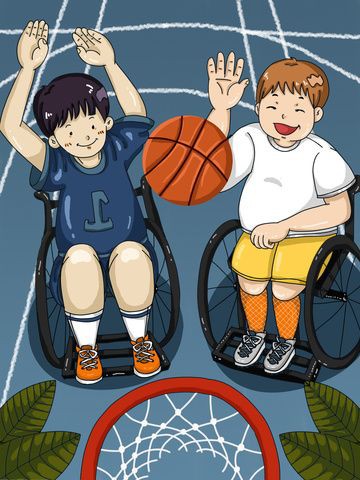
The Potential of Technology in Improving Accessibility and Inclusion in Sports for People with Disabilities
Sports have always been a significant part of human life, providing a platform for physical fitness, entertainment, and social engagement. However, for people with disabilities, sports can often be inaccessible due to various barriers, such as lack of appropriate facilities, equipment, and support. This can lead to exclusion, which affects their physical and mental well-being, as well as their social and economic opportunities. Fortunately, with the advancements in technology, there is a growing potential to address these challenges and improve accessibility and inclusion in sports for people with disabilities.
Understanding the Barriers to Accessibility and Inclusion
Before we explore the potential of technology in addressing the challenges faced by people with disabilities in sports, it is essential to understand the barriers they encounter. These can be physical, such as lack of ramps, lifts, and accessible toilets, or attitudinal, such as stereotypes, prejudice, and discrimination. Furthermore, there can be communication barriers, such as inaccessible information, language, and assistive technologies. All these barriers can create a sense of isolation and exclusion for people with disabilities, which can be detrimental to their overall well-being.
Technology as a Solution to Accessibility and Inclusion
Technology can play a significant role in overcoming the barriers to accessibility and inclusion in sports for people with disabilities. Here are some of the ways in which technology can make a difference:
- Adaptive Equipment: Technology can help design and develop adaptive sports equipment that caters to the unique needs of people with disabilities. For example, there are now wheelchairs designed specifically for basketball, tennis, and rugby, which allow people with disabilities to participate in these sports.
- Virtual and Augmented Reality: Technology can create virtual and augmented reality experiences that simulate sports environments and allow people with disabilities to participate in sports that may be difficult or impossible in the physical world. This can include virtual cycling, skiing, and rowing, among others.
- Assistive Technologies: Technology can provide assistive technologies that enable people with disabilities to participate in sports, such as prosthetic limbs, hearing aids, and visual aids. These technologies can help people overcome physical, sensory, and cognitive barriers and enhance their performance.
- Accessibility Features: Technology can also provide accessibility features in sports facilities and events, such as closed captioning, audio descriptions, and tactile markers. These features can make sports events more accessible and inclusive for people with disabilities, regardless of their sensory abilities.
The Future of Inclusion in Sports
As technology continues to evolve and become more accessible, the potential for improving accessibility and inclusion in sports for people with disabilities will only grow. This can have far-reaching impacts on their physical and mental well-being, as well as their social and economic opportunities. However, it is essential to recognize that technology alone cannot address all the challenges faced by people with disabilities in sports. A holistic approach that considers physical, attitudinal, and communication barriers, along with technology solutions, is necessary to create truly inclusive sports environments.
In conclusion, technology has the potential to be a game-changer in improving accessibility and inclusion in sports for people with disabilities. By creating adaptive equipment, virtual and augmented reality experiences, assistive technologies, and accessibility features, technology can help people overcome the barriers they face and enhance their sports experiences. However, it is essential to approach this issue holistically and recognise that technology is just one piece of the puzzle. With a concerted effort to address physical, attitudinal, and communication barriers, we can create a truly inclusive sports culture that benefits everyone.
